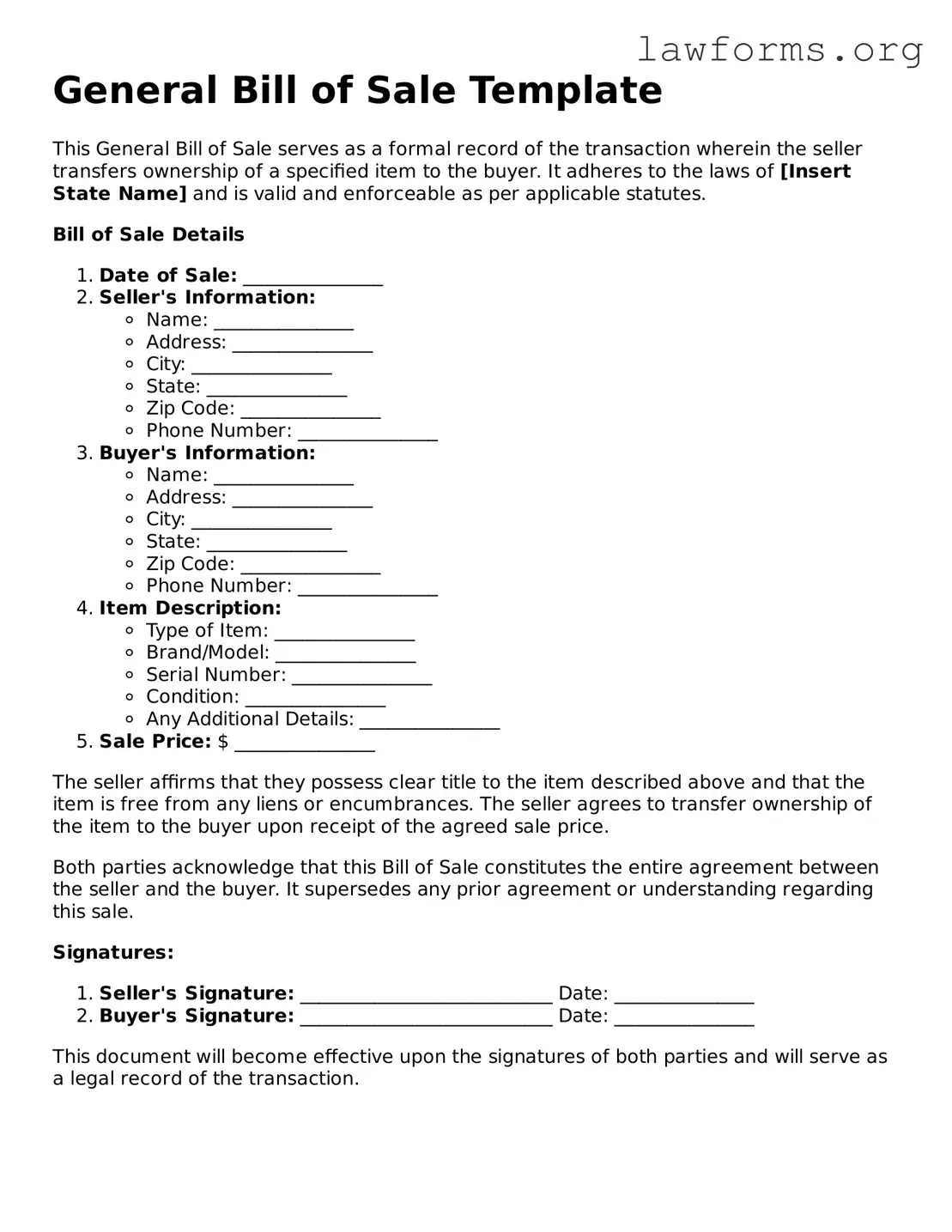General Bill of Sale Template
This General Bill of Sale serves as a formal record of the transaction wherein the seller transfers ownership of a specified item to the buyer. It adheres to the laws of [Insert State Name] and is valid and enforceable as per applicable statutes.
Bill of Sale Details
- Date of Sale: _______________
- Seller's Information:
- Name: _______________
- Address: _______________
- City: _______________
- State: _______________
- Zip Code: _______________
- Phone Number: _______________
- Buyer's Information:
- Name: _______________
- Address: _______________
- City: _______________
- State: _______________
- Zip Code: _______________
- Phone Number: _______________
- Item Description:
- Type of Item: _______________
- Brand/Model: _______________
- Serial Number: _______________
- Condition: _______________
- Any Additional Details: _______________
- Sale Price: $ _______________
The seller affirms that they possess clear title to the item described above and that the item is free from any liens or encumbrances. The seller agrees to transfer ownership of the item to the buyer upon receipt of the agreed sale price.
Both parties acknowledge that this Bill of Sale constitutes the entire agreement between the seller and the buyer. It supersedes any prior agreement or understanding regarding this sale.
Signatures:
- Seller's Signature: ___________________________ Date: _______________
- Buyer's Signature: ___________________________ Date: _______________
This document will become effective upon the signatures of both parties and will serve as a legal record of the transaction.
